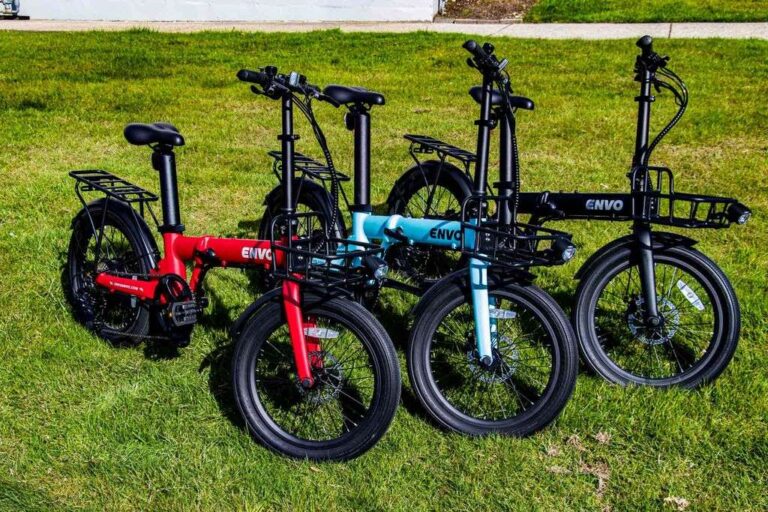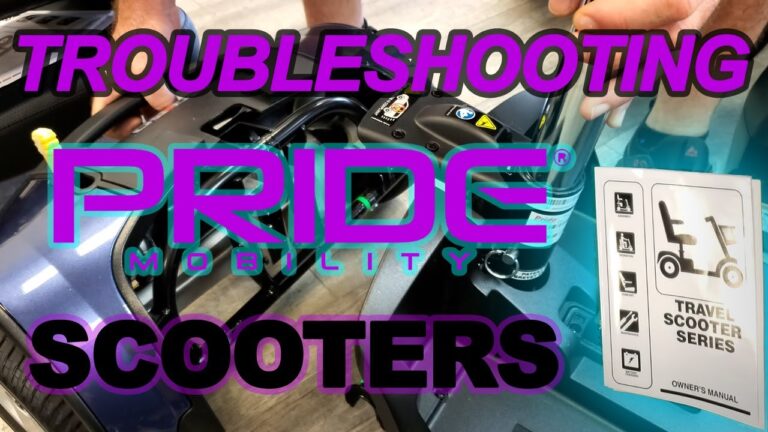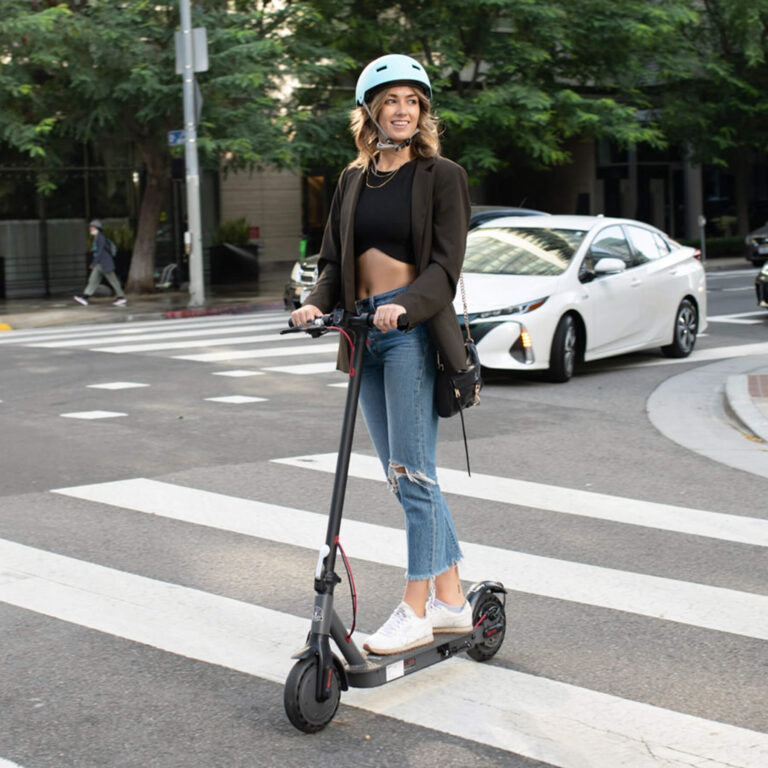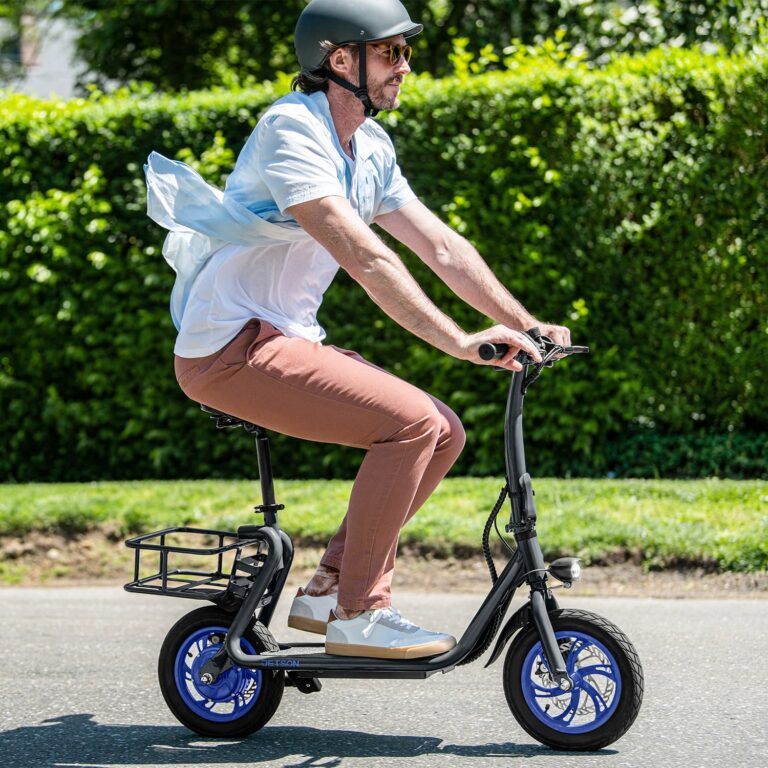Yamaha Scooter Not Starting : Troubleshoot Your Ride
Yamaha scooter not starting? Check the battery and fuel levels, as well as the spark plug.
If you’re experiencing difficulty getting your Yamaha scooter to start, there are a few potential issues to consider. First, ensure that the battery is charged and in good condition. Low battery voltage can prevent the scooter from starting. Next, check the fuel levels to ensure they are sufficient for the scooter to start and run.
It’s also a good idea to inspect the spark plug and verify that it is clean and properly connected. By addressing these common issues, you should be able to troubleshoot and resolve the starting problem with your Yamaha scooter.
Common Causes Of Starting Issues
If you’re experiencing starting issues with your Yamaha scooter, there could be a few common causes. It might be due to a bad spark plug, a clogged fuel line, or a faulty ignition switch. Ensure you check these components for any issues to get your scooter back on the road.
Battery Problems
When your Yamaha scooter fails to start, one of the common causes could be related to battery issues. Here are some possible problems with the battery that could be preventing your scooter from starting:
- Dead battery: If your scooter has been sitting unused for a while, the battery may have lost its charge. In this case, jump-starting the scooter or charging the battery overnight might solve the problem.
- Loose connections: Check the battery connections to ensure they are tight and secure. Loose connections can lead to poor electrical contact and prevent the scooter from starting.
- Corrosion: Battery terminals can become corroded over time, causing poor electrical conductivity. Clean the terminals and connections with a wire brush to remove any build-up and restore proper contact.
- Faulty battery: If none of the above solutions work, your battery may be faulty and need replacement. Take your scooter to a professional technician who can test the battery’s voltage and performance.
Fuel System Issues
Another common culprit behind starting issues in Yamaha scooters is problems with the fuel system. Here are a few potential fuel system issues to consider:
- Empty fuel tank: It might seem obvious, but check your fuel gauge to ensure you have enough gas in the tank. If the tank is empty, refuel and try starting the scooter again.
- Clogged fuel filter: Over time, the fuel filter can become dirty or clogged, obstructing the flow of fuel to the engine. A restricted fuel supply can prevent your scooter from starting. Clean or replace the fuel filter as needed.
- Contaminated fuel: Poor quality or contaminated fuel can cause starting problems. Drain the fuel tank and refill it with fresh, clean fuel from a reputable source.
- Fuel pump malfunction: The fuel pump is responsible for delivering fuel from the tank to the engine. If the pump is faulty or fails, the scooter may not start. Consult a technician to diagnose and repair any fuel pump issues.
Ignition System Failures
Issues with the ignition system can also contribute to starting problems. Consider the following potential ignition system failures:
- Faulty spark plug: A worn-out or damaged spark plug can prevent proper ignition of the fuel-air mixture in the engine. Check the spark plug’s condition, and replace it if necessary.
- Ignition switch problems: The ignition switch controls the flow of electricity to the various electrical components of the scooter. If the switch is faulty or worn out, it may not engage properly, preventing the scooter from starting. Consult a professional technician to diagnose and repair ignition switch issues.
- Malfunctioning ignition coil: The ignition coil is responsible for generating the electrical spark needed to ignite the fuel in the combustion chamber. If the coil is malfunctioning, it can cause starting difficulties. Have a technician inspect the ignition coil and replace it if necessary.
- Starter motor issues: The starter motor turns the engine over when you try to start the scooter. If the motor is defective or fails, it won’t provide the necessary power to start the engine. A technician can diagnose and repair starter motor problems.
Remember, if you’re unsure about diagnosing or fixing any of these issues yourself, it’s always best to consult a qualified technician or mechanic who specializes in Yamaha scooters. They have the expertise to identify and resolve starting problems efficiently.

Credit: m.rediff.com
How To Diagnose Battery Problems
If your Yamaha scooter is not starting, it might be due to battery problems. Learn how to diagnose and troubleshoot battery issues to get your scooter up and running smoothly again.
Yamaha Scooter Not Starting:
Is your Yamaha scooter refusing to start? One of the common culprits behind this issue is a battery problem. Don’t worry, diagnosing battery problems is not as complicated as it may seem. With a few simple steps, you can determine if the battery is causing the starting issue.
Let’s dive into the process of checking the battery voltage, inspecting the battery connections, and testing the starter motor.
Checking Battery Voltage:
- Step 1: Start by locating the battery on your Yamaha scooter.
- Step 2: Use a multimeter to measure the battery voltage.
- Step 3: Ensure that the scooter ignition is turned off.
- Step 4: Connect the multimeter’s positive probe to the battery’s positive terminal and the negative probe to the negative terminal.
- Step 5: Read the voltage displayed on the multimeter. A healthy battery should show a voltage of around 12.4 to 12.6 volts.
- Step 6: If the battery voltage is significantly below this range, it might be the cause of the starting problem.
Inspecting Battery Connections:
- Step 1: Start by visually inspecting the battery connections for any signs of corrosion or loose connections.
- Step 2: Ensure the battery terminals are clean and free from any debris or oxidation.
- Step 3: Make sure the battery cables are securely attached to the terminals and are not loose.
- Step 4: If you notice any corrosion, use a wire brush to gently clean the terminals.
- Step 5: Reconnect the battery cables firmly onto the terminals.
- Step 6: Check if the starting issue persists after inspecting and cleaning the battery connections.
Testing The Starter Motor:
- Step 1: Locate the starter motor on your Yamaha scooter.
- Step 2: Ensure that the scooter ignition is turned off.
- Step 3: Inspect the starter motor for any visible signs of damage or wear.
- Step 4: With the ignition still off, attempt to start the scooter while listening for any unusual sounds coming from the starter motor.
- Step 5: If the starter motor makes a clicking noise or fails to engage, it may be faulty and require further inspection or replacement.
By following these simple steps to check the battery voltage, inspect the battery connections, and test the starter motor, you can narrow down the potential causes of your Yamaha scooter not starting. Don’t forget to take necessary precautions and consult a professional if you’re unsure about performing any of these steps yourself.
Get your scooter back on the road and enjoy the ride!
Resolving Fuel System Issues
If your Yamaha scooter is having trouble starting, it could be due to fuel system issues. Don’t worry, our experts are here to help you resolve these problems efficiently and get your scooter back on the road in no time.
If your Yamaha scooter won’t start, the problem could be related to the fuel system. Here are some steps you can take to resolve fuel system issues and get your scooter back on the road:
Checking Fuel Level And Quality:
- Ensure that your scooter has enough fuel by checking the fuel level in the tank.
- If the fuel level is low, fill up the tank with fresh and clean fuel.
- Make sure that the fuel you are using is of good quality to avoid any potential issues.
Inspecting The Fuel Line:
- Start by locating the fuel line on your scooter.
- Check if there are any visible signs of damage or blockage in the fuel line.
- If there are any leaks or cracks, it’s important to get them repaired or replaced.
- Inspect the fuel filter as well and clean or replace it if necessary.
Cleaning The Carburetor:
- The carburetor plays a crucial role in the fuel system of your scooter, so it’s important to keep it clean.
- Start by removing the carburetor from your scooter according to the manufacturer’s instructions.
- Use a carburetor cleaner and a small brush to clean any dirt, debris, or residue from the various parts of the carburetor.
- Pay attention to the jets and passages, as these can often become clogged and prevent proper fuel flow.
- Once cleaned, reassemble the carburetor and reinstall it onto your scooter.
Remember, if you are not comfortable performing any of these tasks yourself, it’s always best to consult a professional mechanic who can help diagnose and fix any fuel system issues with your Yamaha scooter. Taking proper care of the fuel system will ensure your scooter starts smoothly every time you take it out for a ride.
Addressing Ignition System Failures
Having trouble starting your Yamaha scooter? It may be due to ignition system failures. Addressing these issues can help get your scooter up and running smoothly again.
If your Yamaha scooter is not starting, it could be due to a failure in the ignition system. Ignition system failures can prevent the spark plug from igniting the fuel mixture, leading to starting issues. To troubleshoot and resolve these problems, follow the steps below:
Checking Spark Plug Condition
- Inspect the spark plug for potential issues that may affect its performance. Here’s what to look for:
- Signs of wear and tear, such as corrosion or fouling.
- Incorrect gap distance between the electrodes.
- Loose or damaged connections.
- If any of the above problems are observed, address them accordingly:
- Clean corroded areas or replace the spark plug if necessary.
- Adjust or replace the spark plug if the gap distance is incorrect.
- Tighten connections or replace the spark plug wire if it’s damaged.
Testing The Ignition Coil
- The ignition coil is responsible for generating the high voltage needed to ignite the fuel mixture. To test it:
- Use a multimeter to measure the resistance of the ignition coil. Refer to your Yamaha scooter’s manual for the correct resistance range.
- If the measured resistance is outside the specified range, the ignition coil may be faulty and needs to be replaced.
Inspecting The Kill Switch And Ignition Switch
- Faulty kill switches or ignition switches can disrupt the ignition system, leading to starting issues. Follow these steps to inspect them:
- Check the kill switch position. Ensure it is set to the “ON” position to allow the ignition system to work.
- Inspect the ignition switch for any signs of damage or wear. If necessary, replace the switch.
- Test the electrical continuity of the switches using a multimeter. If continuity is not present when the switches are in the correct position, they may need to be repaired or replaced.
By addressing these common ignition system failures, you can increase the chances of getting your Yamaha scooter back on the road and starting smoothly. Remember to refer to the included steps and guidelines in your Yamaha scooter’s manual to ensure proper maintenance and troubleshooting.
Steps For Troubleshooting A Yamaha Scooter That Won’T Start
Is your Yamaha scooter not starting? Don’t worry, troubleshooting it is easier than you think. Follow these simple steps to get your scooter up and running in no time.
Is your Yamaha scooter giving you trouble starting up? Don’t worry, we’ve got you covered! In this guide, we’ll walk you through a step-by-step process to troubleshoot and identify the issue behind your scooter’s starting problem. Let’s get started!
Step 1: Checking The Battery
The battery is often the root cause for a scooter not starting. Follow these steps to check your Yamaha scooter’s battery:
- Inspect the battery for any signs of damage or corrosion.
- Ensure the battery is securely connected and the terminals are clean.
- Measure the voltage of the battery using a multimeter. A reading less than 12 volts may indicate a weak battery.
- If the battery is old or faulty, consider replacing it with a new one.
Step 2: Inspecting The Fuel System
A faulty fuel system can prevent your scooter from starting. Perform the following checks to troubleshoot the fuel system:
- Check the fuel tank for sufficient fuel level.
- Look for any fuel leaks or clogs in the fuel lines.
- Inspect the fuel filter for any blockage or contamination.
- Make sure the carburetor or fuel injectors are clean and functioning properly.
Step 3: Testing The Ignition System
Issues with the ignition system can also be a culprit for a scooter not starting. Take the following steps to examine the ignition system:
- Check the spark plug for signs of damage or wear. Replace if necessary.
- Inspect the ignition coil for any defects or loose connections.
- Ensure the spark plug wire is firmly connected to the spark plug and ignition coil.
- If needed, test the ignition switch and related wiring for any faults.
Step 4: Troubleshooting The Starter Motor
If the previous steps didn’t resolve the issue, the starter motor might be the problem. Follow these steps to troubleshoot the starter motor:
- Check if the starter motor is making any unusual noises or grinding sounds.
- Ensure the starter motor is receiving power. Check the connections and wiring.
- If the starter motor doesn’t turn or engage, it may need repairing or replacing.
- Inspect the starter clutch and gears for any damage or malfunction.
By systematically going through these troubleshooting steps, you should be able to identify and resolve the issue preventing your Yamaha scooter from starting. If the problem persists, consulting a professional mechanic or contacting Yamaha customer support might be the best way to get your scooter back on the road.
Happy troubleshooting!
Other Considerations For Starting Issues
Having issues starting your Yamaha scooter? In addition to the common problems, other considerations for starting issues may include issues with the ignition switch, battery, spark plug, or fuel delivery system. Make sure to check these factors to troubleshoot the problem.
If your Yamaha scooter is not starting, there are several other factors to consider aside from the common issues addressed in the previous sections. Before heading to the mechanic, it’s worth checking the following areas:
Checking The Air Filter:
- Ensure the air filter is clean and free from debris: A clogged air filter can restrict air flow to the engine, causing starting issues. Cleaning or replacing the air filter regularly can prevent this problem.
- Verify if the air filter is properly installed: Make sure the air filter is securely fitted and seated in its housing. Loose or incorrectly installed filters may lead to inadequate air intake, affecting the scooter’s starting performance.
Inspecting The Exhaust System:
- Look for any visible damage or blockages: A damaged or obstructed exhaust system can hinder proper exhaust gas flow, resulting in starting difficulties. Thoroughly examine the pipes, muffler, and catalytic converter for any signs of damage, rust, or objects blocking the exhaust.
- Check for leaks: Leaking exhaust can impact the scooter’s starting process. Listen for unusual noises or strong odor emissions, which may indicate potential leaks in the exhaust system. Prompt repairs or replacements can help restore proper starting functionality.
Examining The Wiring And Electrical Connections:
- Ensure all connections are secure and intact: Loose or frayed wiring may disrupt the electrical supply, affecting the scooter’s ability to start. Inspect the various connections, including the ignition coil, spark plug wires, and battery terminals, ensuring they are tight and undamaged.
- Look for signs of corrosion or rust: Corrosion on the wires or electrical components can hinder proper electrical conduction, leading to starting issues. Clean any visible corrosion and consider applying dielectric grease to prevent future corrosion problems.
- Test the electrical components: Check the battery’s voltage and ensure it is within the manufacturer’s recommended range. Additionally, inspect the ignition switch, starter motor, and spark plugs for any signs of malfunction or wear. Faulty electrical components can prevent the scooter from starting and might require replacement.
By referring to these various aspects related to your Yamaha scooter’s starting issues, you can potentially identify and address other underlying factors that may be affecting its performance. Remember to take necessary precautions and, if needed, consult a professional mechanic for further assistance.
When To Seek Professional Help
Having trouble starting your Yamaha scooter? If you’re experiencing difficulties with starting your scooter, it may be time to seek professional help. Don’t hesitate to reach out to a trusted mechanic who specializes in Yamaha scooters to diagnose and fix the issue.
Yamaha Scooter Not Starting
Having trouble starting your Yamaha scooter? Don’t worry, we’ve got you covered! While there are troubleshooting steps that you can take on your own, it’s important to know when it’s time to seek professional help. In this section, we’ll discuss the signs that indicate a need for professional assistance and the benefits of consulting a certified technician.
Signs That Indicate A Need For Professional Assistance:
- No response when pressing the ignition button: If your Yamaha scooter shows no signs of life when you try to start it, it could indicate a more complex issue that requires professional attention.
- Frequent stalling or sudden engine shut-off: If your scooter frequently stalls or shuts off unexpectedly while in operation, it could be a sign of electrical or mechanical problems that need expert diagnosis and repair.
- Unusual noises or vibrations: Unusual noises like grinding, clicking, or rattling, as well as excessive vibrations, can be indicators of underlying issues that should be addressed by a professional.
- Smell of fuel or burning odors: A strong smell of fuel or burning odors could signal a potential fuel system problem, which should be handled by a trained technician.
- Persistent battery issues: If you’ve recently replaced your battery and are still experiencing starting problems, there may be an issue with the charging system or other electrical components that require professional evaluation.
Benefits Of Consulting A Certified Technician:
- Expert diagnosis and evaluation: Certified technicians have the knowledge and experience to accurately diagnose the root cause of your starting issues.
- Proper repairs and maintenance: By seeking professional help, you ensure that repairs are done correctly, reducing the risk of further damage to your scooter.
- Access to specialized equipment and tools: Certified technicians have access to specialized diagnostic equipment and tools needed for accurate troubleshooting and repairs.
- Warranty preservation: If your Yamaha scooter is still under warranty, seeking professional assistance ensures that any repairs made are within warranty guidelines.
Remember, knowing when to seek professional help can save you time, money, and frustration. If you’re experiencing any of the signs mentioned above or want peace of mind, reach out to a certified technician who can provide expert assistance for your Yamaha scooter.
Tips To Prevent Starting Issues In The Future
Learn how to prevent starting issues in the future with your Yamaha scooter. Follow these tips to keep your scooter running smoothly and avoid any starting troubles down the line.
Dealing with a Yamaha scooter that refuses to start can be frustrating and inconvenient. To avoid such issues in the future, proactive measures can be taken. Keep your scooter in top shape by following these tips:
Regular Maintenance:
- Conduct routine maintenance tasks to ensure your scooter’s electrical and mechanical components are functioning optimally.
- Regularly check the battery’s charge and connections to avoid any power-related issues.
- Inspect the spark plug and replace it if necessary to maintain proper combustion.
- Keep an eye on the fuel system by cleaning or replacing the filter as needed.
- Regularly change the engine oil as per the manufacturer’s recommendations.
- Pay attention to your scooter’s tires, ensuring they are properly inflated to avoid any handling or starting difficulties.
Proper Storage Practices:
- Store your scooter in a secure and dry location, away from extreme temperatures and moisture.
- Consider using a scooter cover to protect it from dust, debris, and potential damage.
- If storing for an extended period, use a fuel stabilizer to prevent fuel deterioration, which can lead to starting issues.
- It’s advisable to start your scooter periodically during storage to keep the engine components lubricated.
- Before starting your scooter after a long storage period, perform a thorough inspection and make sure all parts are in working order.
By adhering to regular maintenance tasks and adopting proper storage practices, you can significantly reduce the chances of facing starting issues with your Yamaha scooter in the future. Take preventive measures and enjoy a trouble-free riding experience!
Frequently Asked Questions For Yamaha Scooter Not Starting
What To Do If Your Scooter Doesn’T Start?
If your scooter doesn’t start, check the battery, fuel level, spark plug, and ignition switch.
Why Does My Scooter Not Want To Start?
There are several reasons why a scooter may not start: low fuel, dead battery, ignition issues, or mechanical problems.
Why Does My Electric Scooter Have Power But Wont Start?
If your electric scooter has power but won’t start, check the battery connections and try restarting it.
How Do You Start A Scooter That Has Been Sitting?
To start a sitting scooter, follow these steps: Check the battery, fuel, and oil levels. Turn the ignition on. Kickstart or use the electric starter. Give it a few minutes to warm up before riding.
Conclusion
If you’re experiencing difficulty starting your Yamaha scooter, don’t worry – there are steps you can take to troubleshoot and resolve the issue. Start by checking the basics, such as the fuel level, battery connections, and spark plug. If these components are all in working order, you may need to delve deeper into the electrical system or fuel system of the scooter.
Don’t hesitate to consult a professional if you’re unsure or don’t feel confident in tackling the problem yourself. Regular scooter maintenance and preventive measures can also help prevent starting issues in the future. By following these troubleshooting tips and taking proper care of your Yamaha scooter, you can get back on the road and enjoy the freedom and convenience it provides.
Remember, a well-maintained scooter is a reliable scooter!






